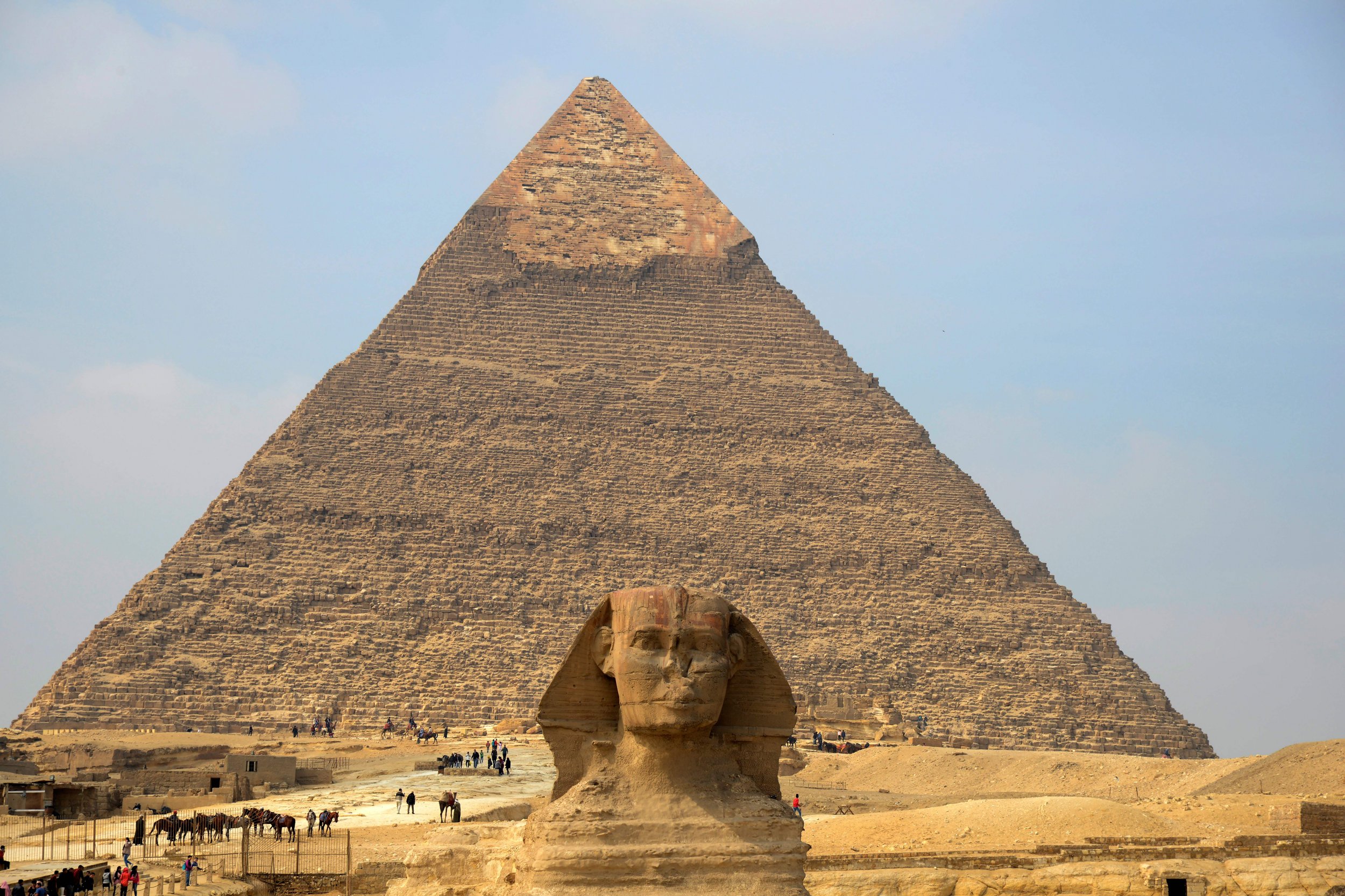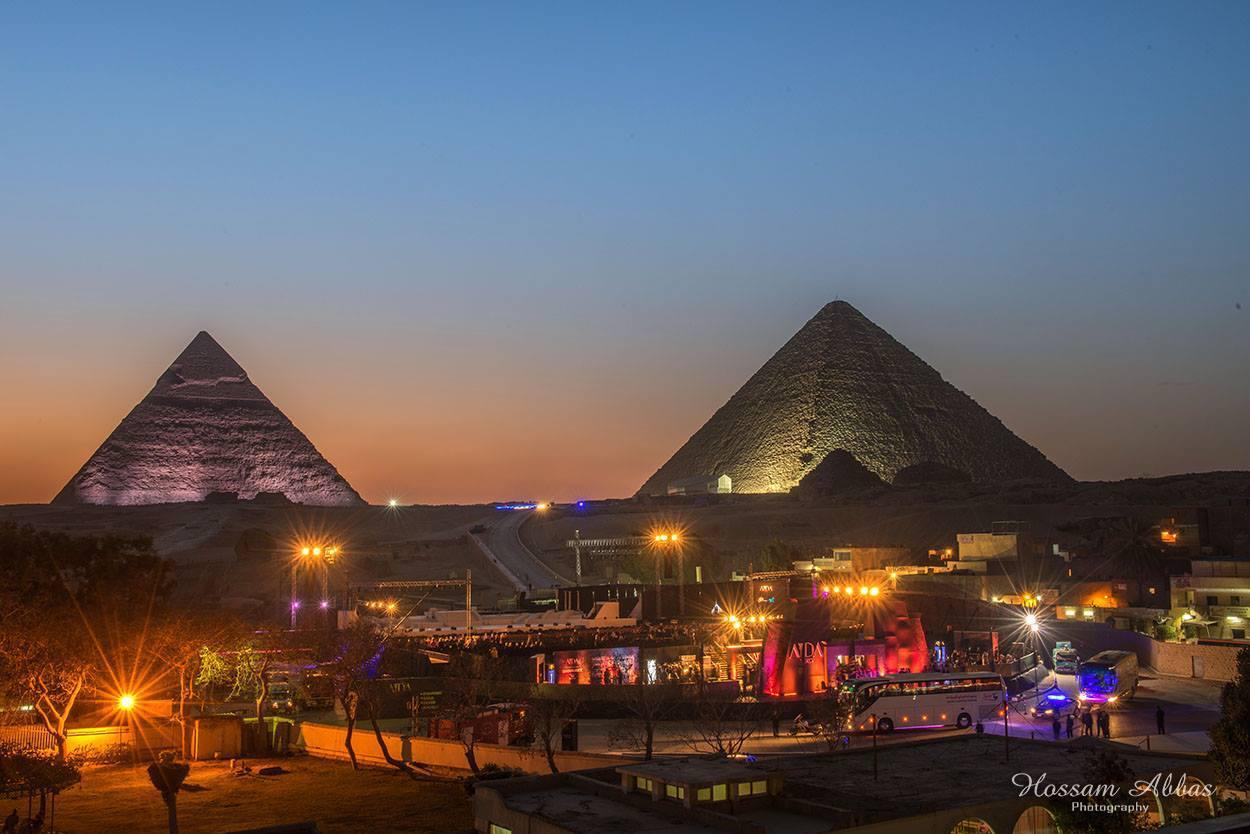You’ve probably seen thousands, if not tens of thousands, of pictures of the Pyramids of Giza, yet nothing beats the feelings of awe that swell in your bosom when gazing upon these awe-inspiring tributes to
You’ve probably seen thousands, if not tens of thousands, of pictures of the Pyramids of Giza, yet nothing beats the feelings of awe that swell in your bosom when gazing upon these awe-inspiring tributes to the power and ambition of Egypt’s Pharaonic rulers in person.
In this article, we will explore the mighty structures that incongruously tower over the edge of Cairo’s suburban sprawl. First on our itinerary is:
The Great Pyramid
Giza’s Great Pyramid (also called the Pyramid of Cheops or Pyramid of Khufu, depending on who you ask) is not only this ancient site’s most famous monument but one of the most well-known monuments in the world. It was built by the Pharaoh Khufu (commonly called by its Greek transliteration of Cheops) and was known to the ancient Egyptians as Ekhet Khufu (Horizon of Khufu).
According to Ancient Greek historian Herodotus, 100,000 men worked on its construction for three months every year. This mammoth structure’s cubic content is staggering. Excluding the rock foundation and the interior chambers, the Great Pyramid is 2.3 million cubic meters. The base measurement is 227.5 meters, and the vertical height is 137.2 meters.
Brave souls can venture into the pyramid’s bowels, although there isn’t much to see once inside the dank, narrow corridors. The entrance is by a passage on the northern side of the pyramid, which was cut by tomb robbers some 15 meters below the original entrance. This narrow tunnel leads into the Grand Gallery, a long passage that is a marvel of skillful masonry. Beyond this is the Tomb Chamber containing the open, empty granite sarcophagus, which once would have contained Khufu’s mummy.
Excavations on the south and east sides of the Pyramid of Cheops in 1954 brought to light five long cavities for boats, with a Solar Barge broken into more than a thousand pieces as a votive offering. Painstaking restoration work pieced the barge back together and the 4,500-year-old, cedar-wood boat is now exhibited in this small one-room museum just beside the Great Pyramid.
On the eastern side of the Pyramid of Cheops are three smaller pyramids made as tombs for queens and a daughter of the Pharaoh and a large cemetery for other relatives. On the south side is a row of large mastabas belonging to high dignitaries.
Pyramid of Chephren
The Pyramid of Chephren, or Pyramid of Khafre, sits 160 meters to the southwest of the Great Pyramid. Built by Khufu’s son Khafre, it at first appears to be larger than his father’s earlier pyramid as it stands on a higher piece of land. A considerable section of the original limestone casing has managed to be preserved on the apex of the pyramid, and the layout of the mortuary temple on the east side can be clearly distinguished. The pyramid has a height of 135.5 meters and a base measurement of 210.5 meters.
Pyramid of Mycerinus
The smallest of the three main Giza pyramids is the Pyramid of Mycerinus, or Pyramid of Menkaure, made of unusually large limestone blocks. It has a vertical height of 62 meters and a base measurement of 108 meters. On the south side of the pyramid are three smaller pyramids, left unfinished, for relatives of the Pharaoh. The best panoramic pyramid views of the entire site are on the rocky escarpment four kilometres south of the Pyramid of Mycerinus.
Sphinx
Perhaps the most celebrated monument in Egypt after the Great Pyramid itself, the enigmatic Sphinx is a simple but finely built granite structure shaped like a recumbent lion that sits immediately northwest of the Pyramid of Cheops. Hewn from the natural rock, it has the head of a pharaoh (commonly thought to be Chephren) and wears the royal head-cloth and cobra.
Weathering and deliberate mutilation have wrought much damage over the course of the centuries, but in spite of this, the Sphinx still conveys a powerful impression of majesty and artistic achievement. The total length of the figure is 73.5 meters, and its height is 20 meters.
And thus concludes our tour around the only Wonder of the Ancient World that is still standing to this day. Have you ever had the chance to visit? Be sure to share your experiences in the comments section below.


